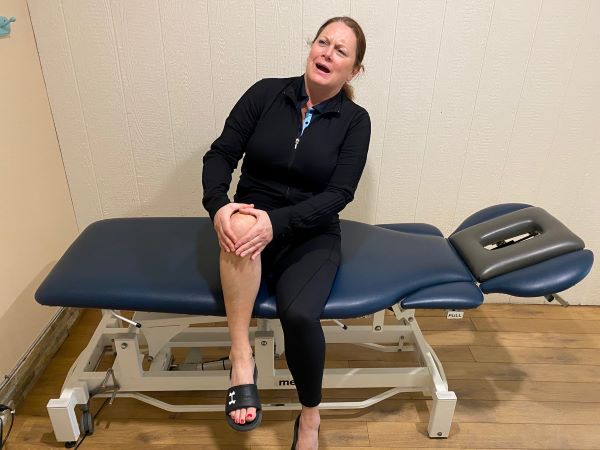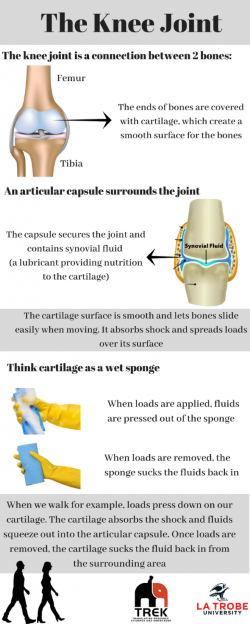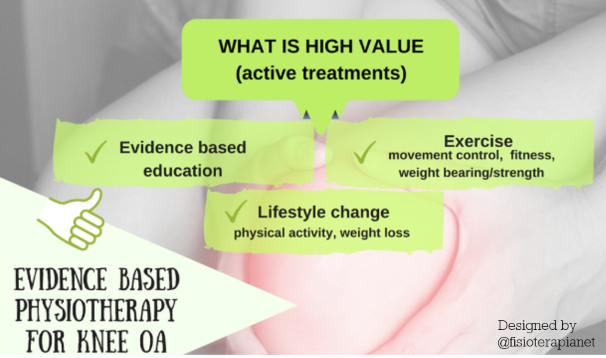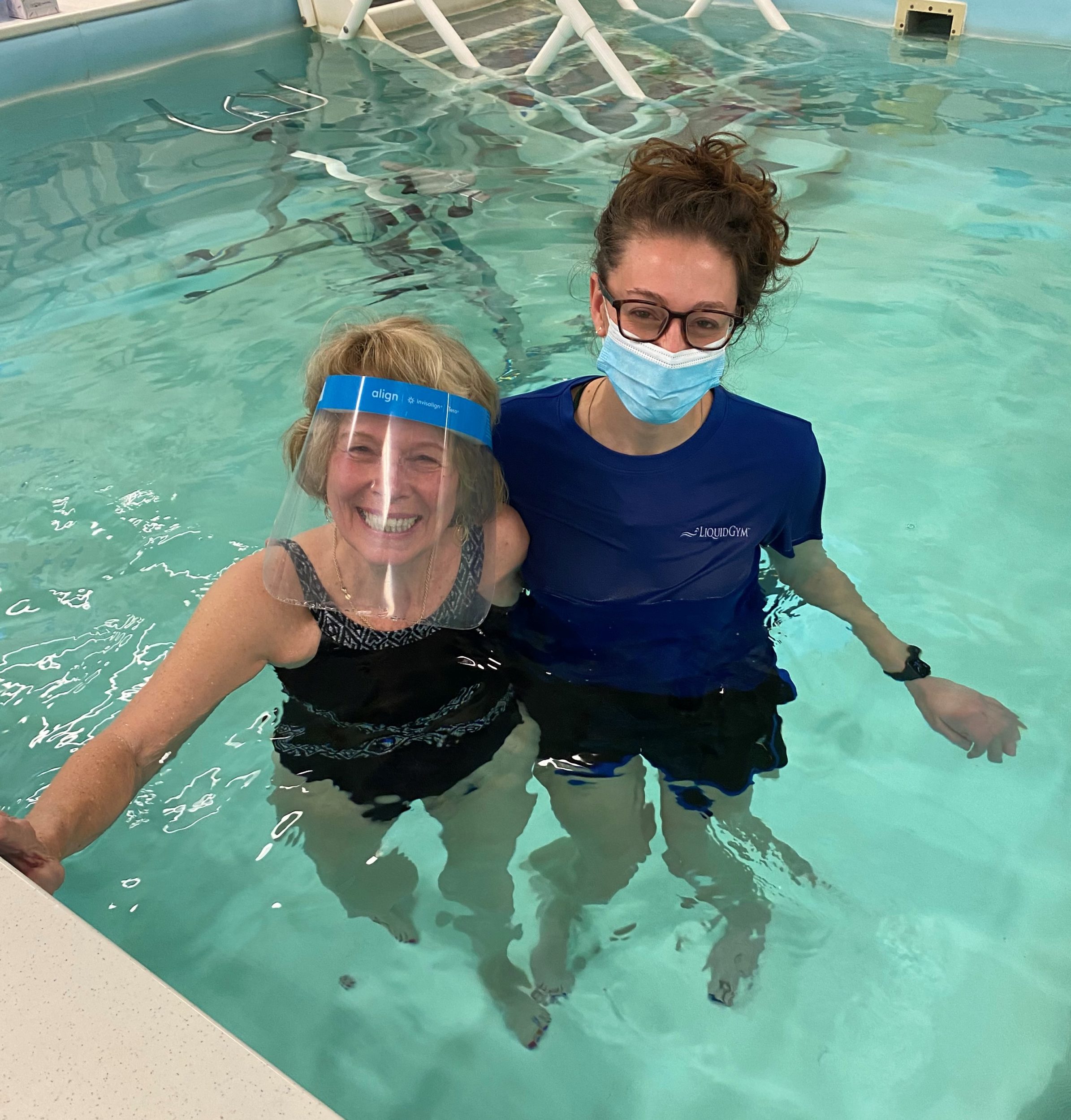
What are the newest treatment recommendations for knee osteoarthritis?
Osteoarthritis (OA) is prevalent in Canada and affects people of all ages. Approximately 3.9 million (13.6%) Canadians aged 20 years and older live with diagnosed osteoarthritis (1), however, many do not know the best ways to treat it. The purpose of this article is to give you the most recent evidence-based treatment recommendations to help manage your symptoms of OA and improve your quality of life.
What exactly is osteoarthritis in the knee?
Osteoarthritis is a disease that affects the whole joint. However, it mainly affects the articular cartilage on the end of the bones – causing it to become thin and fragile. This can be due to healthy cartilage being exposed to heavy loads over a long period of time (for example very heavy labor over several years), or unhealthy cartilage that cannot handle normal loads (2).
Once thought to be caused by the “wear and tear” associated with aging, it is now known that osteoarthritis is a result of the body’s failed attempt to repair joint tissues that are damaged due to abnormal joint loading, joint injury, and obesity (1). This means that OA is ultimately caused by an imbalance in the normal degeneration and regeneration of cartilage. When there is more degeneration of the cartilage then regeneration, the cartilage will start to thin, crack, and may disappear resulting in the bones to start rubbing against each other (2).
How do we keep our cartilage healthy?
Cartilage needs proper loading in order to be healthy. Interestingly, unlike most of our tissues, articular cartilage doesn’t have any nerve or blood supply. The only way the articular cartilage gets any nutrients is through the synovial fluid within the joint.
A good analogy is to think of your cartilage as a wet sponge. When you squeeze/load a sponge, the fluid pushes out and when you unload the sponge, the fluid gets sucked back in. This same mechanism is how your synovial fluid gets in and out of your cartilage, by loading and unloading your joint.

So what are the newest treatment recommendations specifically for knee OA?
The Osteoarthritis Research Society International (OARSI) published its most recent guidelines for non- surgical management of knee OA which include the following:
1) Non-pharmacological treatment options:
The following treatment options are considered “core treatments” and are safe and effective for most patients with Knee OA, regardless of comorbidity (4).
- Arthritis education
- Structured land-based exercise programs – this includes strengthening, cardio, balance training/neuromuscular exercise or Mind-body Exercise including Tai Chi or Yoga
- Dietary weight management in combination with exercise

The following treatment options are recommended for individuals with knee OA with no comorbidities, for individuals with gastrointestinal or cardiovascular comorbidities, or with widespread pain disorders and/or depression (4).
- Aquatic exercise
- Gait aids
- Cognitive behavioral therapy with an exercise component
- Self-management programs

Pharmacological treatment options (4):
- Topical non-steroidal anti-inflammatory drugs (NSAIDs) were strongly recommended for use in Knee OA patients with NO comorbidities
- Topical NSAIDs were strongly recommended for Knee OA patients with no comorbidities and those with gastrointestinal or cardiovascular comorbidities – any adverse reactions were found to be minimal and mild
- Use of Oral NSAIDs were conditionally recommended for individuals with Knee OA who DO NOT have comorbidity conditions
- The use of intra-articular corticosteroids (IACS) injections were conditionally recommended for acute (1-2 weeks) and short-term (4-6 weeks) pain relief in all groups
- The use of intra-articular hyaluronic acid (IAHA) injections were conditionally recommended in individuals with knee OA in all groups for longer term treatment effect – it was associated with symptom improvement beyond 12 weeks
You may have noticed that the pharmacological treatment options are not all recommended for everyone. If you plan to start a new medication always be sure to check with your doctor first as they may not be appropriate for you.

The following links takes you to the Arthritis Society with additional resources.
Splash around: Why water therapy can help with pain, mood and mobility
Whether you call it water therapy, hydrotherapy or aquatic therapy, moving around in a pool can be a really important Read more
Exercises for Osteoarthritis of the Hip & Knee
An exercise program that targets specific muscle groups and the area (s) affected by osteoarthritis can help reduce pain and disability. Read more
Treatment Options
As you can see, there are many ways to manage your knee OA which can help to decrease your pain, improve your overall function and your quality of life.
If you need any help setting up an exercise program or to better understand your osteoarthritis diagnosis, please contact one of our health professionals at LiquidGym and we would be happy to help!
FAQ’s
What are common symptoms of knee OA?
Some of the most common symptoms of knee OA include pain with weight bearing, stiffness, leg feeling unstable or giving out, crunching or clicking noises, difficulty using stairs and hills, sitting on your knees, squatting and getting up from sitting, and even “knock-knees” or “bowed legs” (2).
What is a comorbidity?
A comorbidity is defined by Oxford Languages as the simultaneous presence of two or more diseases or medical conditions in a patient.
What about hip OA?
The recommendations for the treatment of hip OA are slightly different. Stay tuned for an upcoming post.
References:
1. Osteoarthritis in Canada. https://www.canada.ca/en/public-health/services/publications/diseases-conditions/osteoarthritis.html
2. GLA:D Canada: https://gladcanada.ca
3. GLA:D International; Infographics: https://gladinternational.org/home/
4. Osteoarthritis and Cartilage: OARSI guidelines for the non-surgical management of knee, hip, and polyarticular osteoarthritis. Osteoarthritis and Cartilage: Volume 27, Issue 11, November 2019, Pages 1578-1589.
5. Arthritis Society https://arthritis.ca/
Author:
LIndsay Jonkman
Physiotherapist